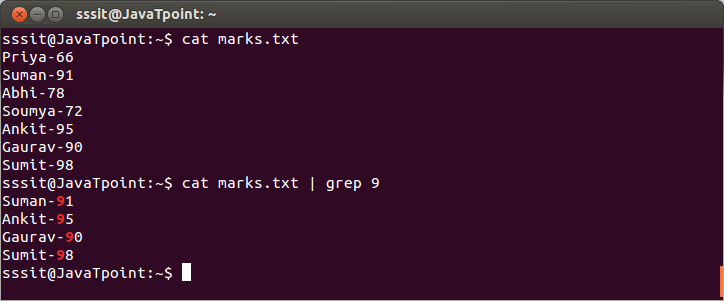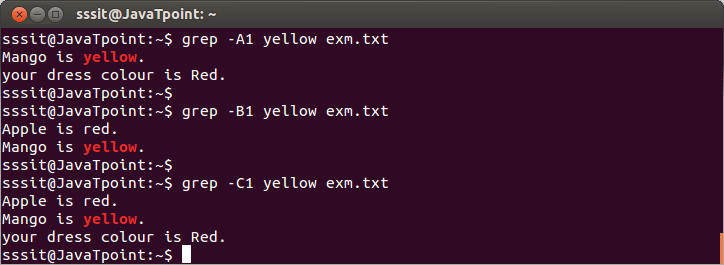Linux grep
The ‘grep’ command stands for “global regular expression print”. grep command filters the content of a file which makes our search easy.
grep with pipe
The ‘grep’ command is generally used with pipe (|).
Syntax:
Example:

Look at the above snapshot, grep command filters all the data containing ‘9’.
grep without pipe
It can be used without pipe also.
Syntax:
Example:

Look at the above snapshot, grep command do the same work as earlier example but without pipe.
grep options
- grep -vM: The ‘grep -v’ command displays lines not matching to the specified word.
- grep -i: The ‘grep -i’ command filters output in a case-insensitive way.
- grep -A/ grep -B/ grep -C
grep -A command is used to display the line after the result.
grep -B command is used to display the line before the result.
grep -C command is used to display the line after and line before the result.
You can use (A1, A2, A3…..)(B1, B2, B3….)(C1, C2, C3….) to display any number of lines.
Syntax:
Example:

Look at the above snapshot, command “grep -v 9 marks.txt” displays lines hwich don’t contain our search word ‘9’.
Syntax:
Example:

Look at the above snapshot, command “grep -i red exm.txt” displays all lines containing ‘red’ whether in upper case or lower case.
Syntax:
Example:

Look at the above snapshot, command “grep -A1 yellow exm.txt” displays searched line with next succeeding line, command “grep -B1 yellow exm.txt” displays searched line with one preceding line and command “grep -C1 yellow exm.txt” displays searched line with one preceding and succeeding line.
